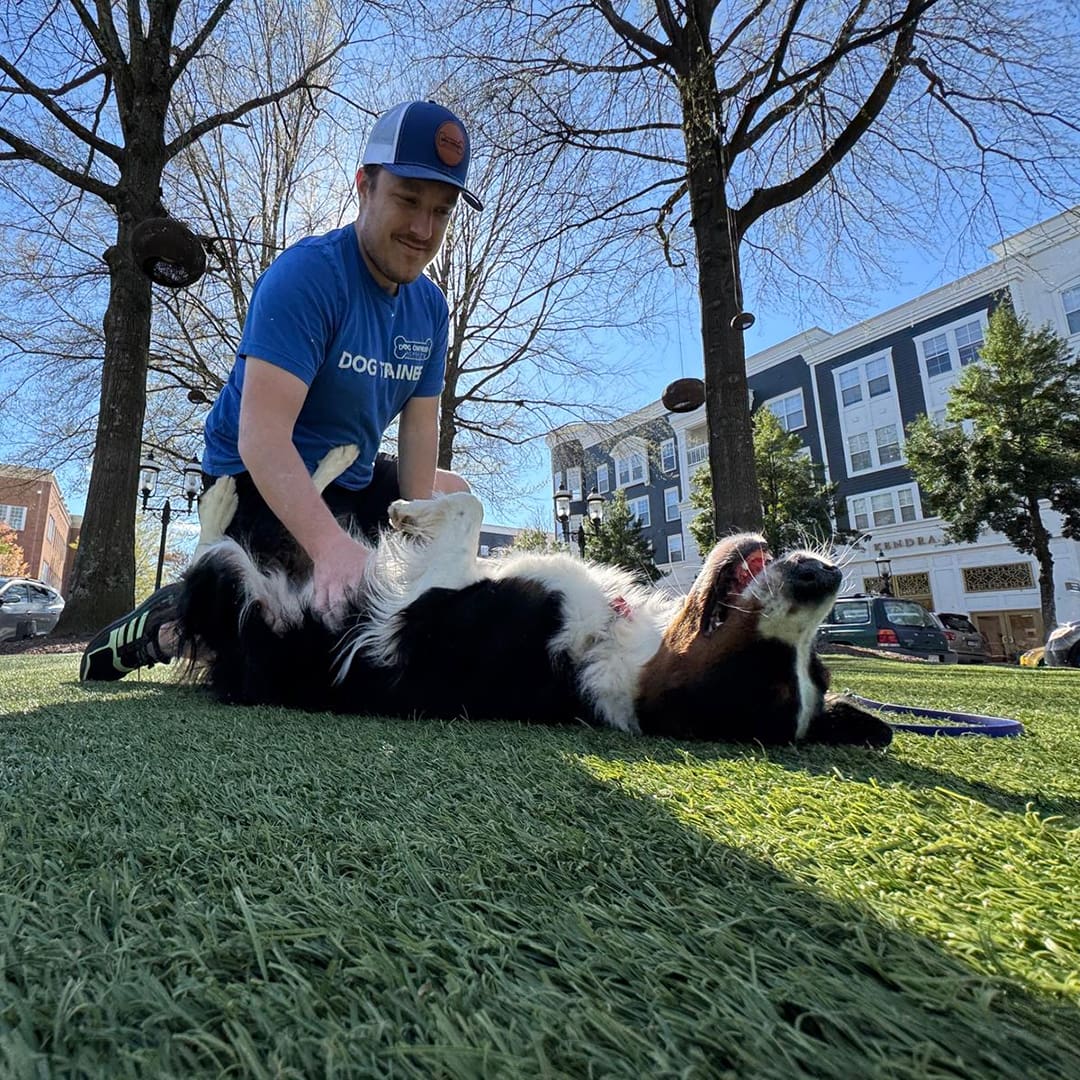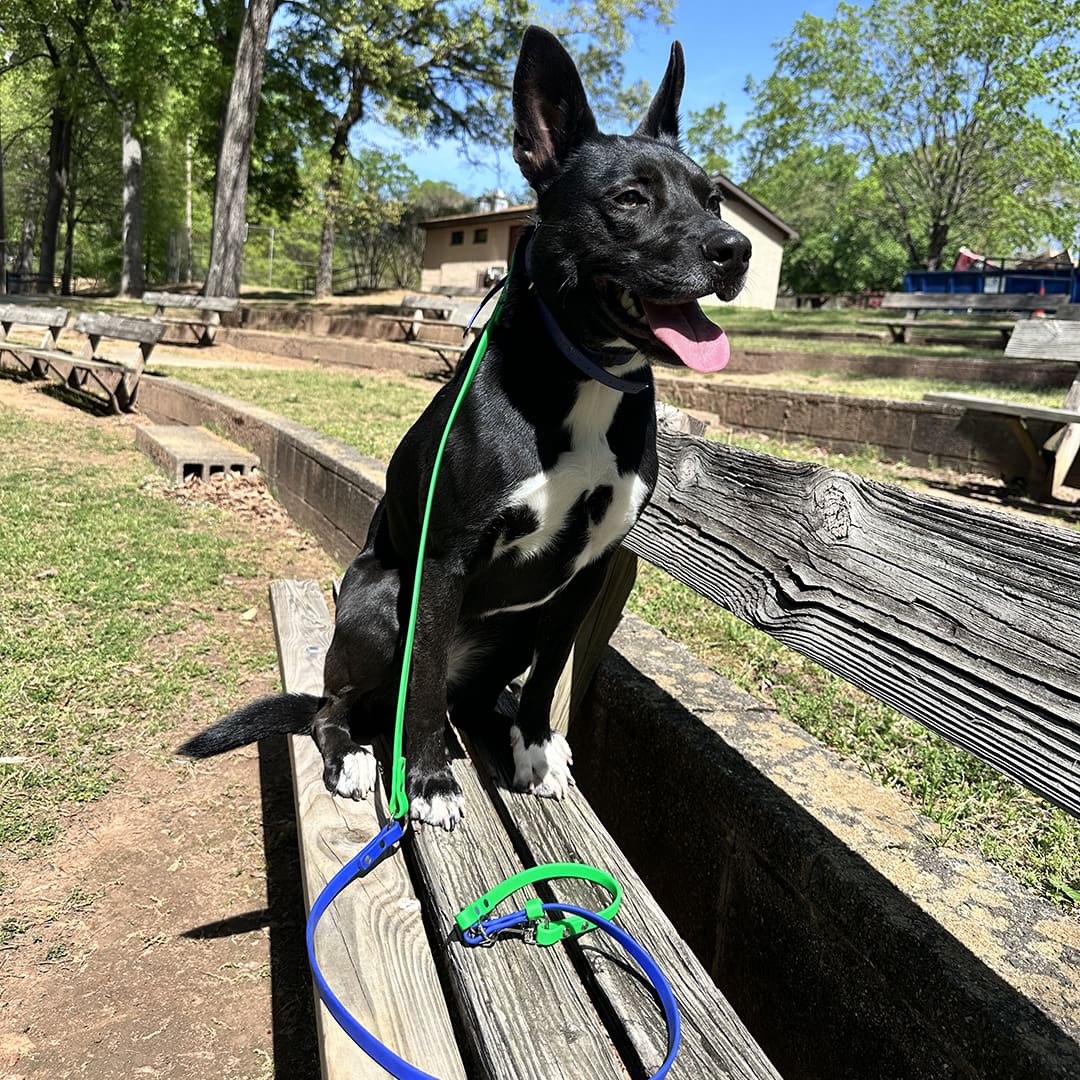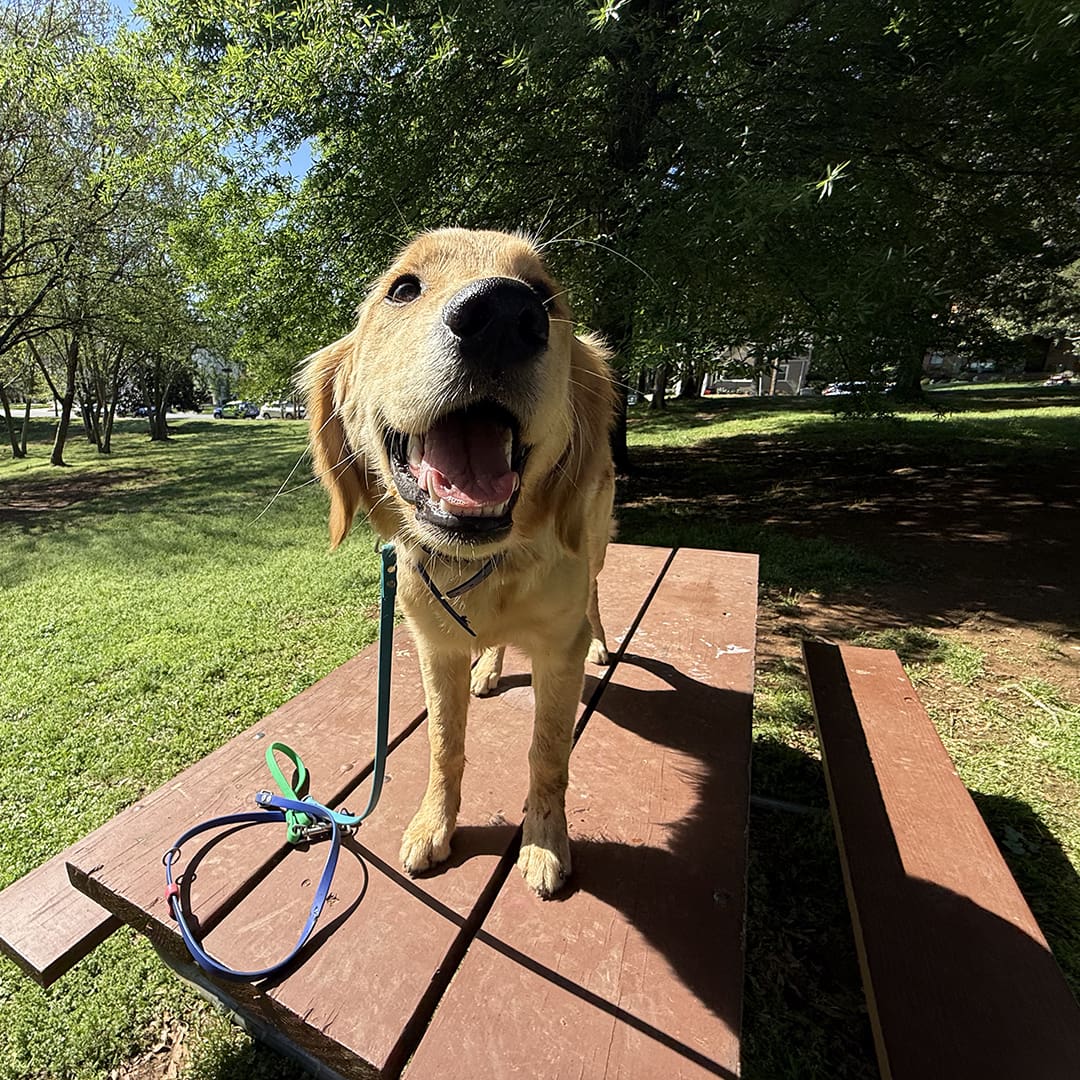If your dog seems to have a sixth sense about dinnertime or knows exactly when it’s time for your evening walk, that’s no accident. Dogs thrive on structure and predictability, and for good reason. Routine helps them feel secure, reduces anxiety, and creates a foundation for consistent training and better behavior.
Unlike humans, dogs don’t tell time by the clock. They observe daily cues—like daylight changes, your body language, and household activity patterns—to anticipate what’s coming next. When those cues follow a consistent pattern, your dog learns to expect what happens when, which provides emotional stability and reduces reactivity.
In this blog, we’ll explore the science behind canine routines and show how a consistent daily structure—feeding, exercise, training, sleep, and socialization—can dramatically improve your dog’s behavior, learning, and overall wellbeing.
The Science Behind Routine and Canine Psychology
Understanding how dogs interpret routine starts with biology. A dog’s internal systems are highly responsive to patterns in their environment—and when those patterns are stable, behavior improves.
Circadian Rhythms and Your Dog’s Internal Clock
Dogs operate on a circadian rhythm, a 24-hour internal cycle that influences:
- Sleep and wakefulness
- Hunger and digestion
- Mood and behavior
When daily activities like meals, walks, and bedtime align with these natural cycles, dogs feel more balanced and are less likely to act out due to stress or overstimulation.
The Hypothalamus: Brain Center for Behavioral Regulation
Routine affects the hypothalamus, a part of the brain that controls many of your dog’s instincts and emotional responses. A steady, predictable schedule helps regulate:
- Energy levels
- Body temperature
- Hormonal fluctuations
This regulation makes your dog more emotionally stable and easier to train.
Reducing Stress Hormones Through Routine
Feeding Schedules and Behavioral Outcomes
You may not think of feeding time as a behavioral issue, but when your dog eats—and how consistently—has a major impact on their mood, energy, and training success.
Why Consistent Mealtimes Matter
Sticking to a set feeding schedule can:
- Reduce begging and food anxiety
- Prevent resource guarding or aggression
- Support training by syncing energy levels
A dog who knows food is coming at the same time each day is less likely to become stressed, agitated, or overly focused on food throughout the day.
Unpredictable Feeding and Behavior Risks
When dogs are fed at inconsistent times, it can lead to:
- Anxiety and pacing around the kitchen
- Increased food guarding or aggression
- Frustration between pets in multi-dog households
This unpredictability can also cause erratic energy surges and make training less effective.
Feeding and Digestive Health
Regular mealtimes contribute to:
- Predictable potty patterns
- Fewer stomach issues
- Easier house training
Pairing a feeding schedule with regular potty breaks can speed up the training process and prevent accidents. Our dog training programs often include personalized feeding and elimination routines to support housebreaking and digestion-related behavior concerns.
Exercise Routines and Energy Management
Exercise is one of the most effective ways to manage your dog’s energy, but random bursts of activity aren’t enough. Like feeding, consistency in exercise routines plays a key role in shaping behavior.
Dogs that don’t get regular, scheduled activity are more likely to show signs of frustration, restlessness, and destructive behavior. On the other hand, those who know when their next walk or play session is coming are generally more relaxed and focused the rest of the day.
The Benefits of Scheduled Exercise Include:
- Fewer behavioral problems
Structured activity helps reduce unwanted behaviors like chewing, digging, or hyperactivity, especially in high-energy breeds. - Improved training success
A well-exercised dog is more receptive to learning. Physical activity can reduce excess energy that might otherwise make training difficult. - Better sleep patterns
Just like people, dogs sleep better when they’ve had enough activity. Regular play and walks help regulate rest cycles.
Timing also matters. A morning walk can set a calm tone for the day, while evening play can help burn off energy before bedtime. If your dog is acting out, one of the first things to look at is whether they’re getting enough consistent movement.
Sleep Patterns and Behavior Regulation
Sleep may not seem like a training tool, but it’s essential to good behavior. Dogs need anywhere from 12–18 hours of sleep per day depending on age, breed, and activity level. Without enough rest—or without a consistent sleep routine—behavior often suffers.
Sleep promotes balance. When dogs don’t get regular, quality sleep, they’re more likely to be irritable, reactive, and unable to focus during training. Overtired dogs can even act hyper, which may be mistaken for high energy rather than exhaustion.
Establishing a bedtime routine is one of the simplest ways to improve behavior. This can include:
- A short wind-down walk
- Turning down lights and noise at the same time each evening
- Providing a calm, safe space for your dog to rest
Avoid stimulating activities—like fetch or intense play—right before bed. Just as important: keep wake-up times consistent. A dog who wakes up at the same time each morning is more likely to stay on track with meals, potty breaks, and training.
Potty Training and Routine Reinforcement
Routine is one of the most powerful tools you have when it comes to potty training. Dogs thrive on patterns, and when those patterns are used consistently, they learn faster and with fewer setbacks.
Start by paying attention to your dog’s natural rhythms. Most dogs need to go out:
- Shortly after waking up
- After meals
- After play sessions
- Before bed
Rather than waiting for accidents, anticipate their needs and take them out at regular intervals. Use the same door, the same verbal cue, and reward them immediately afterward. These cues, repeated consistently, build strong associations.
Inconsistency is one of the biggest reasons potty training fails. If your dog eats at different times each day, they’ll need to go out at unpredictable times, making it harder to set a routine. The more structured your day is, the more success you’ll see.
At Dog Owner’s Academy, we emphasize schedule-based training techniques that align with your dog’s natural instincts. With the right routine, even dogs who’ve struggled in the past can learn to go where—and when—they’re supposed to.
Training Sessions and Skill Retention
Consistency is the cornerstone of effective training. You can’t expect a dog to learn a behavior if the timing, environment, or expectations are constantly changing. Routine gives training structure—it turns one-time lessons into habits.
Why Routine Matters in Training:
- Short, daily sessions work best.
Rather than hour-long training marathons, brief, focused sessions repeated at the same time each day are far more effective. A few five-minute intervals per day can lead to better long-term retention than a single weekly session. - Timing is everything.
Choose times when your dog is alert but not overexcited. For many dogs, this is mid-morning or late afternoon. Training right after exercise or meals can work well too, depending on your dog’s energy and focus level.
- Repetition builds reliability.
Practicing the same commands in a consistent setting each day helps reinforce them. Once your dog has mastered the basics, gradually change the location or add distractions to generalize the behavior.
Socialization and Routine Exposure
For dogs, especially puppies, socialization isn’t a one-time event—it’s a regular practice. Just like with humans, social confidence is built over time through consistent exposure. A predictable schedule of outings and introductions helps dogs feel safe in new situations.
Benefits of Routine Socialization Include:
- Less reactivity. Dogs who routinely encounter other dogs, people, and places are less likely to respond with fear or aggression.
- Greater confidence. Repeated positive experiences in new environments help your dog feel comfortable and adaptable.
- Improved leash manners. Daily walks or trips to pet-friendly locations allow for consistent reinforcement of polite behavior around distractions.
Start small—maybe a walk around the block each morning, or visiting the same quiet park once or twice a week. As your dog gains confidence, you can add variety. The key is that exposure is regular and positive, not overwhelming.
Make social time a normal, expected part of the day, just like meals or walks. This way, your dog doesn’t just survive new experiences—they begin to enjoy them.
Managing Separation Anxiety with Routine
Few behavioral challenges are as distressing as separation anxiety—for both the dog and the owner. Fortunately, routine can be a powerful way to ease this issue by making departures and absences feel normal instead of unpredictable or threatening.
How Routine Helps Dogs Feel Secure When Alone:
- Predictable departures and returns reduce stress. When you leave at consistent times, your dog begins to expect and accept your absence.
- Departure cues like putting on shoes, grabbing keys, or saying goodbye become less emotionally charged when they’re always followed by the same sequence of events.
- Structured alone-time training—starting with short intervals and gradually extending—helps build tolerance over time.
You can also create a departure routine that signals safety: give your dog a special toy or treat before you leave, use the same phrase (“Be back soon”), and leave without fanfare. Over time, your dog begins to associate your absence with something positive and predictable.
Adapting Routines During Life Changes
No matter how consistent your routine is, life happens. Whether you’re moving, changing jobs, welcoming a new baby, or even bringing home a second pet, these transitions can throw your dog’s rhythm into disarray. That’s when it becomes even more important to establish new routines quickly and calmly.
Tips for Smooth Transitions:
- Introduce changes gradually. If your schedule will shift significantly (like returning to an office job), begin adjusting wake-up, walk, and meal times a week or two in advance.
- Maintain core elements. Try to keep feeding, potty breaks, and sleep time consistent, even if everything else changes temporarily.
- Offer structure in new environments. When moving, establish a designated potty spot, feeding area, and sleeping space right away.
Dogs are creatures of habit, and while they’re adaptable, they rely on us to help them feel secure when things change. By anchoring them with a routine—even in the middle of upheaval—you reduce stress and set the stage for successful behavior in the new normal.
Tools and Tips for Creating a Consistent Routine
You don’t need to build a rigid schedule to help your dog thrive—but a basic framework goes a long way. Think of it less like a strict timetable and more like a series of dependable patterns.
Helpful Tools:
- Digital calendars and reminders
Use your phone to set recurring alarms for meals, walks, or training times. - Routine trackers
Apps or simple journals can help you track changes in behavior alongside adjustments to your dog’s schedule. - Shared routines
If multiple family members are involved in your dog’s care, agree on consistent cues, timing, and rules. This reduces confusion and speeds up learning.
The goal isn’t perfection—it’s predictability. Even small, consistent efforts make a big difference in your dog’s confidence, behavior, and responsiveness.
Conclusion: Routine Is the Key to a Balanced Dog
From potty training to separation anxiety, many behavioral issues can be traced back to inconsistency. By creating predictable daily rhythms, you help your dog feel secure, calm, and ready to learn. Structure supports everything from obedience to sleep to socialization—and the beauty is, you don’t need fancy tools or long hours to get it right. Just regular habits and a little intention.
If you’re not sure where to start or need support adapting routines for your lifestyle, reach out to our team. At Dog Owner’s Academy, we’re here to help you develop personalized routines that build better behavior, stronger bonds, and a more peaceful life with your dog.
Opening Hours
M-Sa: 10am - 7pm
Address
1111 Central Ave., Charlotte, NC 28204
Phone
844 864 3647




